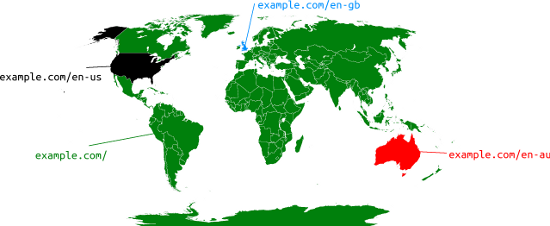Creating the Right Homepage for your International Users
If you are doing business in more than one country or targeting different languages, we recommend having separate sites or sections with specific content on each URLs targeted for individual countries or languages. For instance one page for US and english-speaking visitors, and a different page for France and french-speaking users. While we have information on handling multi-regional and multilingual sites, the homepage can be a bit special. This post will help you create the right homepage on your website to serve the appropriate content to users depending on their language and location.
There are three ways to configure your homepage / landing page when your users access it:
- Show everyone the same content.
- Let users choose.
- Serve content depending on users’ localization and language.
Show users worldwide the same content
Let users choose which local version and which language they want
Automatically redirect users or dynamically serve the appropriate HTML content depending on users’ location and language settings
- Have rel-alternate-hreflang annotations.
- Are accessible for Googlebot’s crawling and indexing: do not block the crawling or indexing of your localized pages.
- Always allow users to switch local version or language: you can do that using a drop down menu for instance.
About rel-alternate-hreflang annotations
- Your annotations must be confirmed from the other pages. If page A links to page B, page B must link back to page A, otherwise, your annotations may not be interpreted correctly.
- Your annotations should be self-referential. Page A should use rel-alternate-hreflang annotation linking to itself.
- You can specify the rel-alternate-hreflang annotations in the HTTP header, in the head section of the HTML, or in a sitemap file. We strongly recommend that you choose only one way to implement the annotations, in order to avoid inconsistent signals and errors.
- The value of the hreflang attribute must be in ISO 639-1 format for the language, and in ISO 3166-1 Alpha 2 format for the region. Specifying only the region is not supported. If you wish to configure your site only for a country, use the geotargeting feature in Webmaster Tools.



